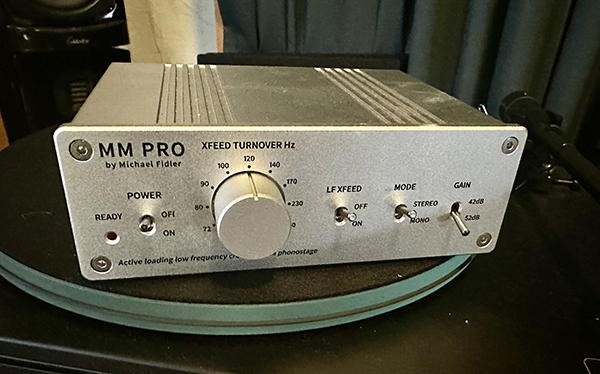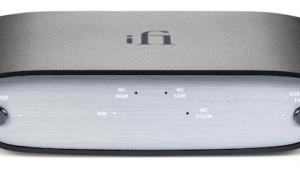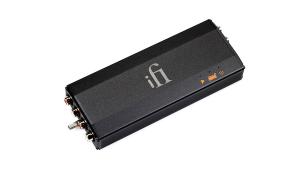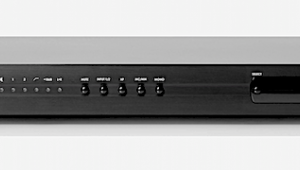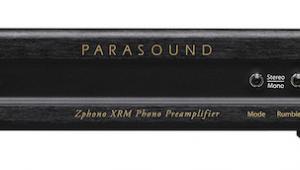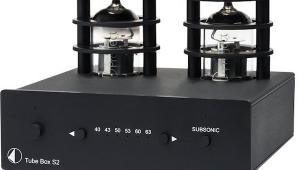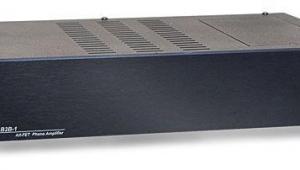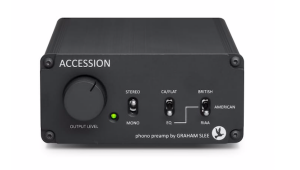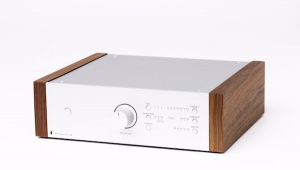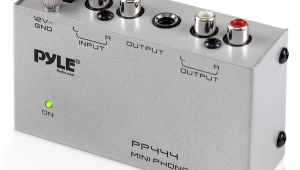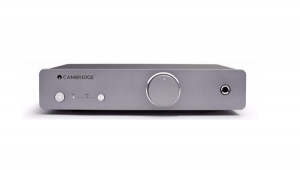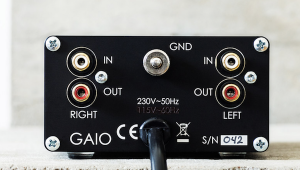Classic Audio’s MM PRO by Michael Fidler Phono Preamp Heads to the Top of Its Price Class
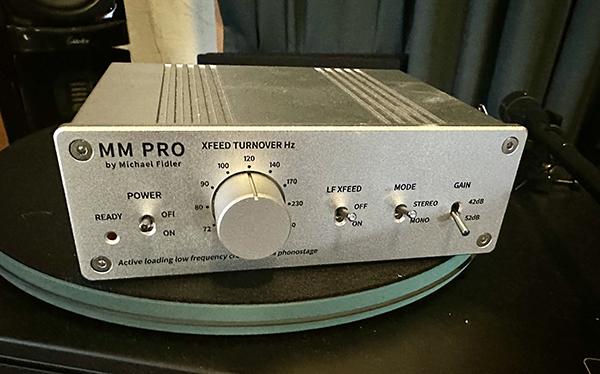
Hand-built in Kent, England, Classic Audio’s MM PRO by Michael Fidler phono preamp ($800) is a pint-sized bruiser that packs a hell of a punch. This little box — no bigger than a Samsung Galaxy Z Fold phone tucked into a Band-Aid tin — is a serious piece of kit hiding inside a sandblasted aluminum frame.
“Active loading from an original dedicated head amplifier reduces input noise below what's possible with conventional passive cartridge loads,” states Fidler’s information-packed site re the MM PRO. (More on the site itself in just a bit.) “This, combined with a triple-stage architecture, precision RIAA equalization, variable low-frequency crossfeed, and a robust balanced output, make for a highly versatile phono stage with stratospheric performance,” the site continues.
Before I get into the MM PRO’s many features and specs, I do have to say that Fidler’s site is the most information-dense, fact-filled, trumpet-blaring audio site I’ve ever seen. For each of his two PRO Series phono preamp products — the MM PRO I’m reviewing here, and the MC PRO — Fidler offers technical descriptions that resemble educational treatises on various aspects of electrical design. If that’s too much information for you to absorb all at once, each section also offers a summary paragraph that condenses these ultra-deep technical dives into bite-sized info nuggets.
That said, if you’ve ever wanted to know that, “When records are mastered, all low-frequency information before 200Hz has to be carefully panned to mono,” or “Even a perfectly set-up turntable will produce low-frequency disturbances below 20Hz,” or even the reasoning behind how “Many obtrusive clicks and pops exist as stereo information, and can be at least partially cancelled in mono mode,” Fidler’s site may be your ultimate destination, audio-wise.
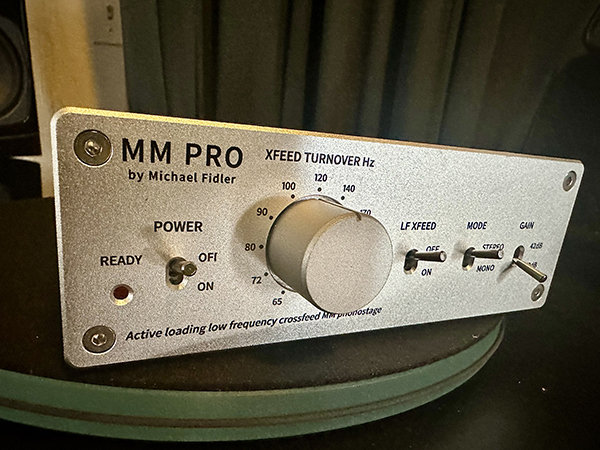
Features & Specs
Fidler’s MM PRO phono preamp includes a linear power supply, balanced outputs, mono switch, low-frequency crossfeed dial, and the aforementioned active loading for lower noise with an MM cartridge than, according to the site, “any other phono stage using a passive 47kΩ load.” Again, Fidler’s truly impressive site offers a veritable litany of MM PRO features and specs-related info beyond the scope of what we’re able to include here (but you get the idea).
The MM PRO features hand-soldered, through-hole PCB technology using double-sided fiberglass PCBs with “ground planes on both sides for very low crosstalk.” Also on tap are film capacitors in the equalizer network and a subsonic filter, Panasonic FR and FM series electrolytic capacitors, and 1% tolerance metal thin-film resistors in the audio path “for high gain accuracy and excellent linearity.” Not only that, but the MM PRO also sports gold-plated toggle switches, rear-panel gold-over-nickel-plated RCA and XLR connectors, a 6mm CNC-milled aluminum front panel anodized for scratch resistance, and stainless-steel panel screws.
Technical specs for the MM PRO include THD as <0.0005%, 20Hz to 22kHz, at 21V RMS; maximum output (20Hz to 28kHz) as 21V RMS (XLR) or 10.5V RMS (RCA); gain at 1kHz (RCA) as 42.39dB; input impedance as 50kΩ/120pF; subsonic filter 23Hz, 3rd order, for –23dB at 10Hz; and low-frequency crossfeed (dial) as 65Hz to 600Hz, --4.3dB to –21.6dB at 50Hz.
The MM PRO’s front-panel controls include an LED power light, off/on switch, large Xfeed Turnover dial, LX Feed off/on switch, mono/stereo mode switch, and gain switch offering 42dB or 52dB. The back panel includes a turntable ground plug, one pair of RCA inputs, one pair of line-level RCAs, left and right balanced inputs, and a 9V AC connector.
Finally, the MM PRO’s dimensions are 6.77 x 2.36 x 6.1in, w/h/d/ (72 x 60 x 155mm, w/h/d), and it weighs about as much as a pair of track shoes.
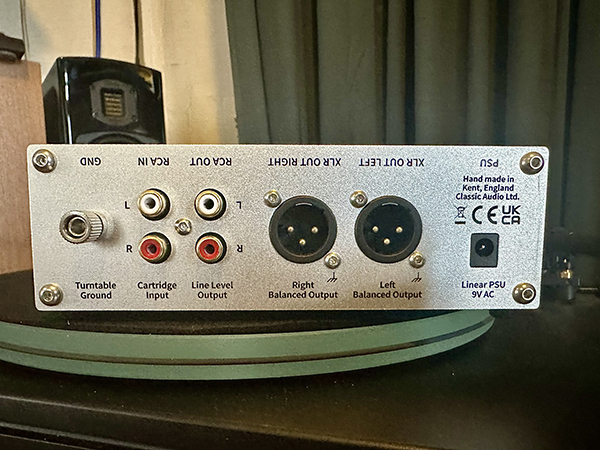
Setup
For this review, my system included a Gold Note T-5 turntable (which I reviewed here on AP back on July 17, 2024), Denon/OJAS DL-103o MC and Goldring MM 1006 cartridges, Bob’s Devices step-up transformer (a.k.a. SUT), PrimaLuna EVO 300 Hybrid integrated amp, GoldenEar BRX stand-mount loudspeakers, and various cables from Auditorium 23 (speaker), Audioquest (ICs), and Triode Wire Labs (ICs, power cable).
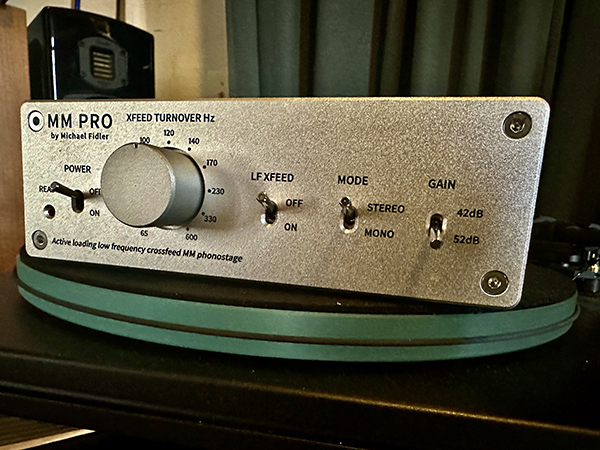
Listening Sessions
Playing various records through the Denon/OJAS DL-103o cart with the MM PRO produced exceedingly clear images, and pristine clarity allied to a clear midrange and voluminous, if undefined bass. Though full-bodied, bass yearned for a touch more definition. While the treble occasionally shimmered with a papery edge, taming the brilliance of cymbals and strings, it was a fleeting flaw. The MM PRO blossomed with the lush textures of ’80s Japanese jazz vinyl, contemporary ambient dreamscapes, and the raw energy of early ’70s Muse label releases. However, the sterile nature of mid-’70s Blue Note reissues felt constricting, their nasal qualities laid bare by the system's uncompromising transparency.
Solid separation and a great sense of air around instruments added to the MM PRO’s favorable qualities. The recent, and most excellent UHQR 200g 45rpm version of Bill Evans Trio’s June 1961 classic Sunday at The Village Vanguard (Analogue Productions, AUHQR 0017-45) sounded immediate and energized, with papery cymbals, meaty piano, and full stature of the genius bass work of Scott LaFaro. The trio’s rendition of Miles Davis’ “Solar” revealed minimal piano brilliance but good cymbal ping. LaFaro’s bass stunned in ingenious note clusters, half-time accents, odd groupings, and spare walking figures. In effect, the MM PRO gave solid resolution to this legendary recording’s unusual bass focus. Again, the MM PRO’s clarity, separation, and broad soundstage abilities chalked up to excellent performance.
Grant Green’s 1973 offering Green Blues (Muse MR 5014), a rare title beyond his Tone Poet-replenished Blue Note discography, is a straight-ahead outing with drummer Dave Bailey, bassist Ben Tucker, pianist Mark Gardner, and saxophonist Frank Haynes — and it burns at a slow simmer. The MM PRO pulled no punches and played it straight with little editorializing, with the sound deep, fat, and rich. Green’s guitar was smooth, the acoustic bass was weighty if lacking definition, and the drums were reasonably fleshy and transparent. The MM PRO is largely transparent to sources, though its absolute top-end and low-end are rather soft and recessed compared to more expensive phono preamps.
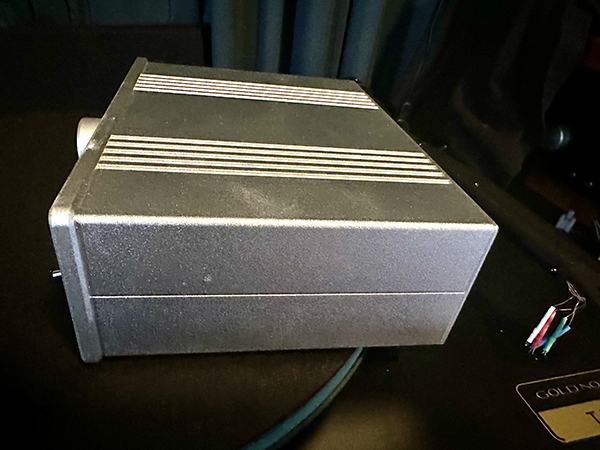
The Master Trio’s essentially self-titled 1983 outing (Baybridge Records KUX-183-B) with pianist Tommy Flanagan, bassist Ron Carter, and drummer Tony Williams is yet another example of the excellent jazz recordings produced by Japan in the ’70s, ’80s, and ’90s, with a focus on immediacy, clarity, and full resolution.
While the MM PRO adeptly conveyed this recording’s core qualities of clarity and imaging, it fell short of fully capturing the album’s grandiosity. The piano’s depth, the bass’s weight, and Williams’ percussive force were undeniably present but lacked the visceral impact achievable with higher-end components. Nonetheless, the MM PRO’s precise imaging and consistent transparency offered a compelling, if somewhat attenuated, listening experience.
In comparison, the Goldring 1006 MM cart, once a familiar reference point, revealed its limitations when subjected to the MM PRO’s unflinching scrutiny. Paul Wells, a seasoned drummer and sonic architect, aptly described its sound as bland and gritty — a characterization I found impossible to refute. The MM PRO, a truth-telling component, mercilessly exposed the Goldring’s deficiencies, underscoring the importance of a strong front end in high-fidelity systems. It’s clear that while the MM PRO can elevate capable sources, it can equally reveal the shortcomings of lesser components.
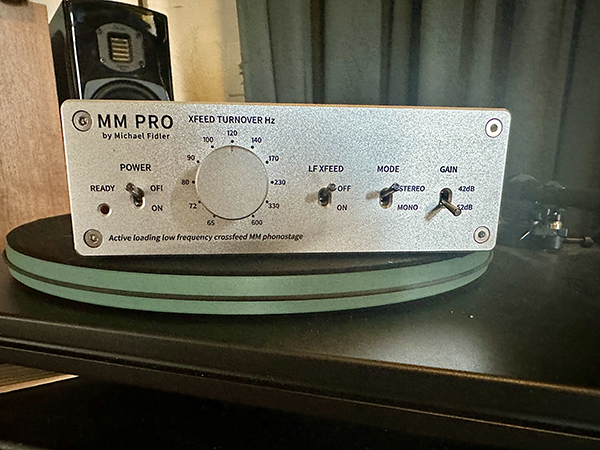
Conclusions
The $800-range phono preamp market is a fiercely competitive arena, populated by well-established brands. Classic Audio’s MM PRO by Michael Fidler is a relative newcomer, yet it is a formidable contender with serious build quality and a superbly smart design. Despite the lack of widespread recognition, Fidler’s phono preamp delivers a solid performance that impressed.
The MM PRO’s exceptional clarity, imaging, and overall energy place it in a serious position with more established phono preamp rivals from Pro-Ject, Naim, Clearaudio, and Sutherland, albeit with one caveat — those devices offer both MM and MC operation. Regardless, Michael Fidler’s masterful MM PRO undoubtedly deserves a spot on any audiophile’s shortlist when considering phono preamp options in this price range.
For more about Michael Fidler’s MM PRO, go here.
To order an MM PRO direct from the manufacturer, go here.
Author bio: Former musician, former artist, and former legal wastrel Ken Micallef has written numerous hi-fi equipment reviews for Stereophile and Analog Planet, and his byline has also appeared within Mojo, Electronic Musician, and The Grammys. You can also find him at YouTube (Ken Micallef Jazz Vinyl Audiophile).
